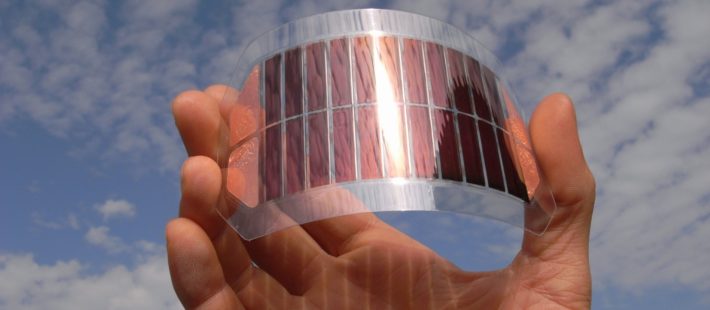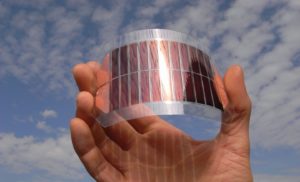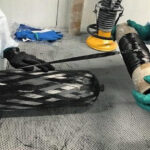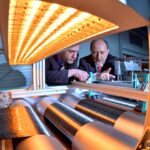A basic organic solar cell consists of a thin film of organic semiconductors sandwiched between two electrodes that extract charges generated in the organic semiconductor layer to an external circuit. It has long been assumed that 100% of the surface of each electrode should be electrically conductive to maximize the efficiency of charge extraction.
Scientists at the University of Warwick in the UK have now discovered that only around 1% of the surface area of the electrodes in organic solar cells needs to be electrically conductive for them to be fully effective. This finding, which is reported in a paper in «Advanced Functional Materials», opens the door to using a range of composite materials at the interface between the electrodes and the light harvesting organic semiconductor layers to improve device performance and reduce cost.
“It’s widely assumed that if you want to optimize the performance of organic solar cells you need to maximize the area of the interface between the electrodes and the organic semiconductors,” said lead researcher Ross Hatton from the Department of Chemistry. “We asked whether that was really true.”
To find out, the researchers developed a model electrode that could have its surface area changed systematically. This revealed that when as much as 99% of the electrode’s surface was electrically insulating, it still performed as well as if 100% of the surface was conducting, provided the conducting regions weren’t too far apart.
High-performance organic solar cells have additional transparent layers at the interfaces between the electrodes and the light-harvesting organic semiconductor layer. These transparent layers are essential for optimizing the light distribution in the device and improving its stability, but must also be able to conduct charges to the electrodes. This is a tall order and not many materials meet all of these requirements.
“This new finding means composites of insulators and conducting nanoparticles such as carbon nanotubes, graphene fragments or metal nanoparticles could have great potential for this purpose, offering enhanced device performance or lower cost,” explained Dinesha Dabera, a postdoctoral researcher. “Organic solar cells are very close to being commercialized but they’re not quite there yet, so anything that allows you to further reduce cost whilst also improving performance is going to help enable that.”
“What we’ve done is to demonstrate a design rule for this type of solar cell, which opens up much greater possibilities for materials choice in the device and so could help to enable their realization commercially,” said Hatton.
Organic solar cells are potentially very environmentally friendly because they contain no toxic elements and can be processed at low temperatures using roll-to-roll deposition. This means they can have an extremely low carbon footprint and a short energy payback time.
“There is a fast-growing need for solar cells that can be supported on flexible substrates that are lightweight and color-tuneable,” said Hatton. “Conventional silicon solar cells are fantastic for large-scale electricity generation in solar farms and on the roofs of buildings, but they are poorly matched to the needs of electric vehicles and for integration into windows on buildings, which are no longer niche applications. Organic solar cells can sit on curved surfaces and are very lightweight and low profile. This discovery may help enable these new types of flexible solar cells to become a commercial reality sooner because it will give the designers of this class of solar cells more choice in the materials they can use.”
Source: MaterialsToday
You find the article here: https://onlinelibrary.wiley.com/doi/10.1002/adfm.201904749













